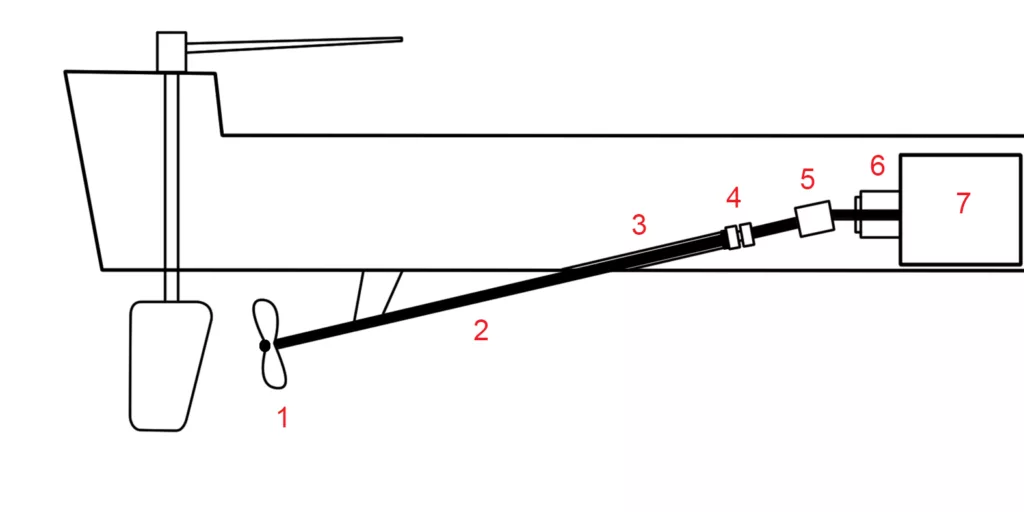A motor unit generates its propulsion from three elements: the engine, the shaftline and the propeller.
What connects the various engine parts in a boat is called a monobloc.
There are three main types of engine:
Outboard (FB): both the engine body and the propeller foot are outside the hull and removable. The shaft line is vertical and the motor body is in continuation with the motor shaft. The latter, also known as the foot, rotates on itself with the propeller so that it also acts as a rudder. The outboard motor may have a long stem for a displacement or ‘v’ hull, or it may be short or planing in the case of a flat hull;
Inboard-outboard (EFB): unlike the previous one, the EFB engine is not removable. The body of the engine is inside the hull, while the parts that transmit movement to the propeller are outside and are grouped in the so-called sterndrive unit. Where this type of engine is located we have the cowling, a seal that protects the engine from the ingress of water. Here the propeller also acts as a rudder;
Inboard (EB): in the inboard engine, the only elements outside the hull are a small section of the propeller shaft and the propeller itself. The rudder in this type of engine is not steerable, and must therefore be independent of the propeller.
The shaft line
The set of mechanical elements that transmit energy created by the engine to the propeller is called the shaft line.
The figure below shows the shaft line with all its sections – which we will go into in more detail in another section.

1) Propeller
2) Propeller shaft
3) Casing: the casing serves to contain a gasket, also known as a packing or braid, which prevents water from entering the engine. Towards the hull, the casing contains the stuffing box or braid press, a device that must be adjusted so as not to over-tighten but at the same time prevent water from entering the hull;
4) Thrust bearings: these can be ball bearings or rocker pads and transmit the thrust of the propeller to the hull;
5) Coupling: serves to re-align the drive shaft and the propeller shaft;
6) Gearbox: the gearbox, also known as the reverser, is used to reverse the direction of rotation of the propeller shaft and, like a gearbox, allows the ratio between the engine and propeller revolutions to be varied. It consists of two gears, one connected to the propeller shaft, the other to the motor;
7) Bearing: the bearing here serves to reduce the stresses on the motor.
Transmission types
1) POD transmission: the POD transmission rotates the motor foot around its vertical axis – this is why it is called an azimuthal transmission. When a hull has a pivoting foot there is no rudder blade and manoeuvring is in the hands of the pivoting feet. It is a type of transmission often used in combination with the later IPS and typical of many electric motors;
2) IPS transmission: This transmission is found in many motorised hulls and allows the propellers to be directed forward or backward, with different effects on sailing speed.
It is a transmission system that reduces consumption, noise and improves performance, speed and acceleration.
3) S-Drive transmission: this transmission is usually found on small to medium-sized sailing yachts and replaces the traditional shaft line. It can be easily recognised by the hole in the hull, which is usually larger than the one for the traditional shaft. It tends to be smaller and quieter. Being behind the centreboard reduces hydrodynamic resistance when sailing.
4) Water-jet drive: as the word reveals, here the engine powers a pump that shoots a jet of water into a duct, which increases its pressure and enables it to constitute a propulsive thrust. The water-jet system is often used for larger units, although not exclusively. However, on smaller, lower-speed units it reduces manoeuvrability, which is a negative when the weather conditions are bad. On the other hand, one of its positives is that it allows the boat to sail on shallow waters without the risk of damaging propeller elements.
In another section we will also discuss two-stroke and four-stroke engines and the difference between a diesel engine and a petrol engine.